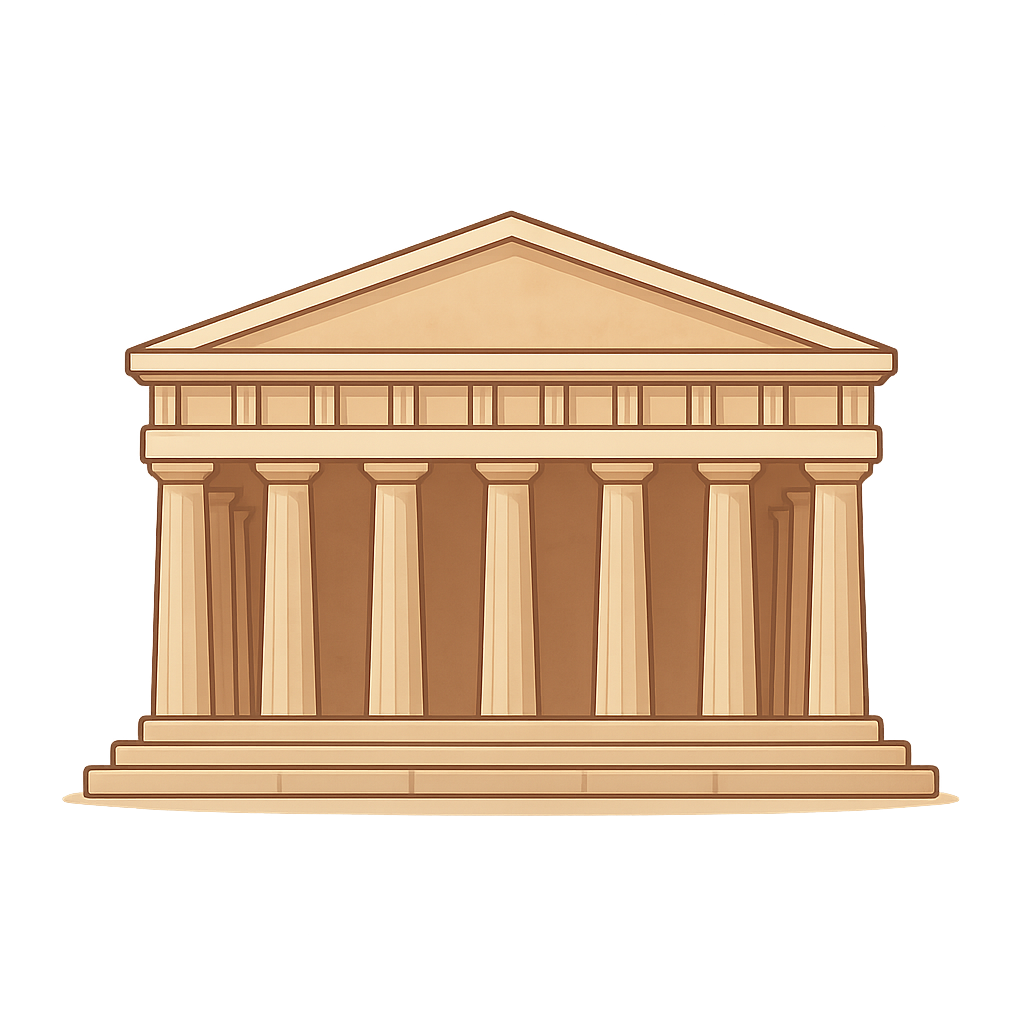The Story of the Parthenon
The warm Greek sun has been my constant companion for two and a half millennia. It warms my ancient marble columns in the morning and casts long, dramatic shadows as evening falls over the city below. From my perch atop this high, rocky hill, the Acropolis, I watch the bustling, modern city of Athens spread out like a map. I see cars moving like tiny beetles and hear the distant hum of a world that has changed in ways my first builders could never have imagined. Yet, some things remain the same. The wind still whispers secrets through my colonnades, carrying tales of philosophers, artists, and citizens who once walked where tourists now tread with wonder. Millions of people have stood in my shadow, their faces tilted upward, trying to grasp the scale of my creation and the depth of the history I hold within my stones. They feel the echoes of a distant past, a time of gods and goddesses, of bold ideas and breathtaking art. I am a crown of marble on the brow of Athens. I am the Parthenon.
My story begins in what is called the Golden Age of Athens, a remarkable time of peace and prosperity. It was the vision of a great statesman named Pericles that brought me into being. After the Athenians bravely defended their freedom in the Persian Wars, Pericles dreamed of a city that would be an inspiration to the world, a symbol of democracy, wisdom, and beauty. He declared that we would build a temple so magnificent it would be spoken of for all time. Construction began in the year 447 BCE. Pericles gathered the most brilliant minds of his era to design me. The architects, Iktinos and Kallikrates, were mathematical geniuses. They knew that to make a building appear perfectly straight to the human eye, you must build it with subtle curves. My columns bulge slightly in the middle and lean inward by a tiny fraction, tricks of perception that make me seem alive and perfectly proportioned. Inside my walls stood the masterpiece of the sculptor Phidias: a colossal statue of the goddess Athena, the protector of the city. She stood nearly forty feet tall, crafted from shimmering gold and smooth ivory, holding a shield and a winged figure of Victory. I was her home, but I was also a treasury and a monument to the Athenian spirit—a testament to what free people could achieve through creativity and cooperation.
My life as a temple to Athena lasted for nearly a thousand years, but civilizations change, and empires rise and fall. As the ancient world gave way to new beliefs, I was transformed. Around the 6th century CE, I became a Christian church, my inner sanctum now dedicated to the Virgin Mary. The great statue of Athena was lost to history, and my decorations were altered to fit my new purpose. For centuries, I served this new faith. Then, in the 15th century, the Ottoman Empire conquered the city, and I was transformed once more, this time into a mosque, with a tall minaret added to my structure. I have been a home to different gods and different prayers, a silent witness to the shifting tides of history. My most painful memory, however, comes from the year 1687. During a war between the Venetians and the Ottomans, I was being used as a storage place for gunpowder. A Venetian cannonball struck my roof, igniting the explosives in a catastrophic blast. The explosion tore through my center, shattering my columns and bringing down much of my structure. The world thought I was lost forever. In the early 1800s, many of my surviving sculptures were removed by a British nobleman, Lord Elgin, and taken to London. Though my body was broken and parts of me were carried far away, my spirit endured.
Today, I am no longer a temple, a church, or a mosque. I am a precious piece of world history, and people work tirelessly to protect what remains of me. Modern archaeologists and restorers are like detectives and doctors for ancient buildings. They study my every stone, using advanced technology to understand how my creators built me and how to best preserve me from the passage of time. They carefully piece together my broken fragments, strengthening my structure so I can continue to stand tall. Millions of visitors from every corner of the globe still make the pilgrimage up my hill each year. They walk between my columns, their voices hushed with awe, as they connect with the distant past. They come not just to see a beautiful ruin, but to feel the power of the ideas I represent. I am more than just marble; I am a timeless symbol of human creativity, the quest for knowledge, and the birth of democracy. I stand as a reminder that even when things are broken, their spirit can inspire new generations to build, to create, and to dream of a better world.
Reading Comprehension Questions
Click to see answer
